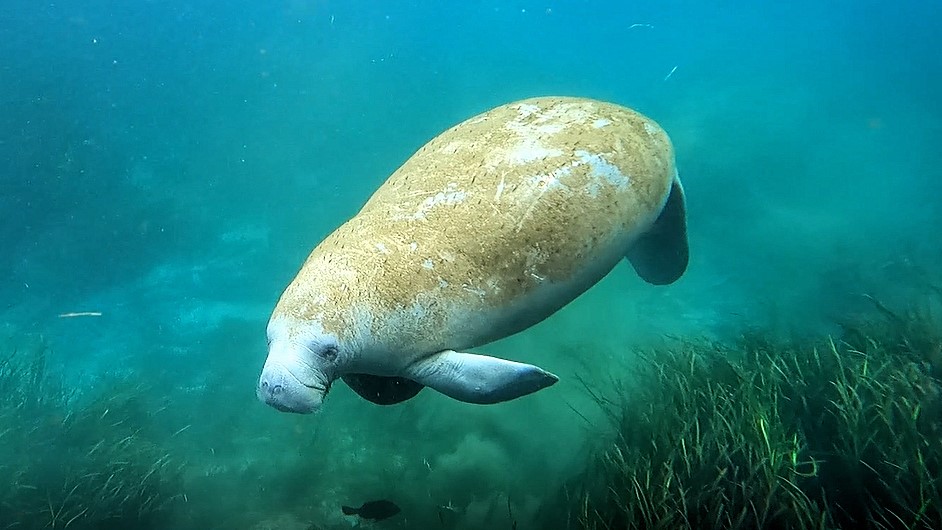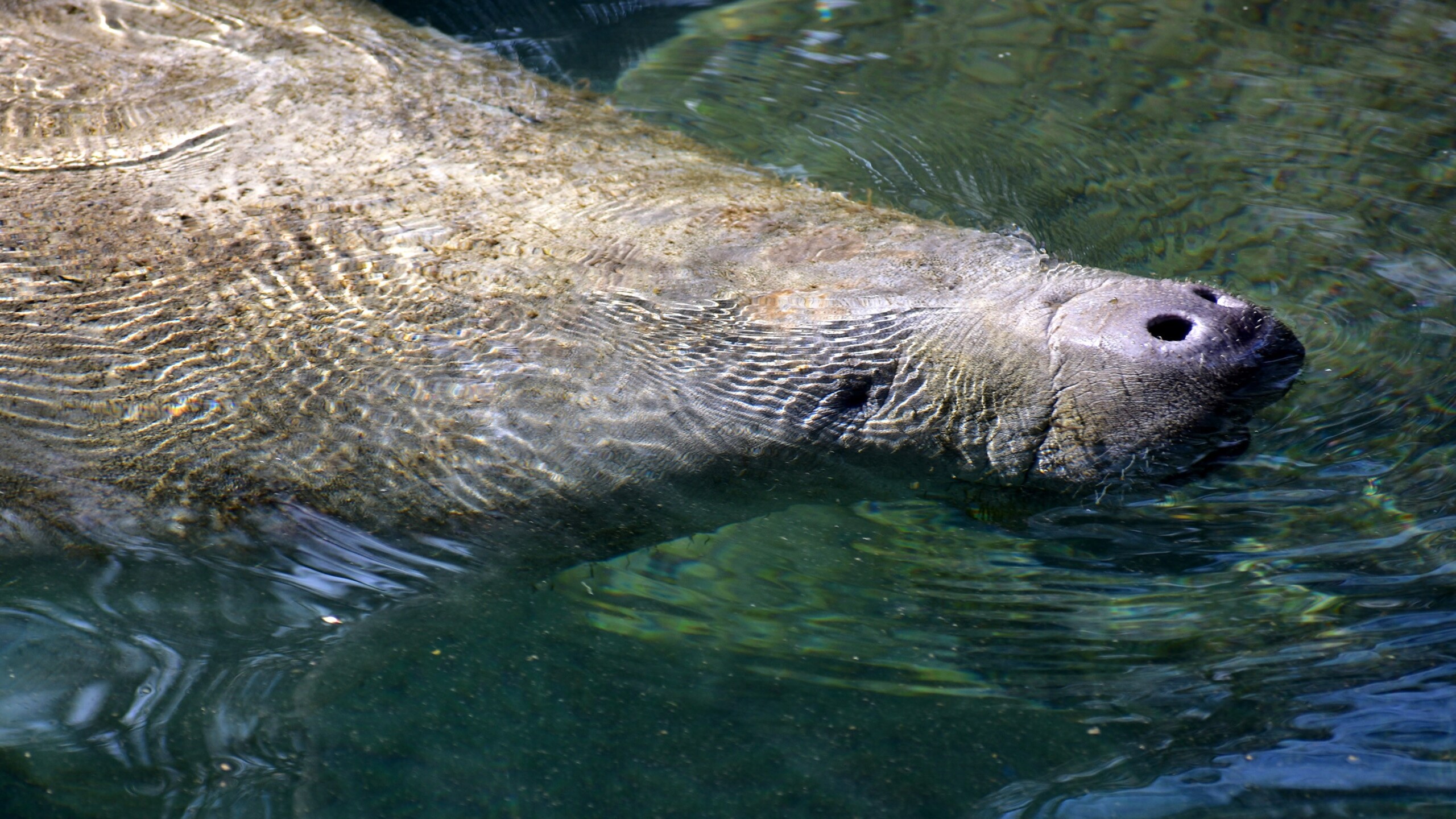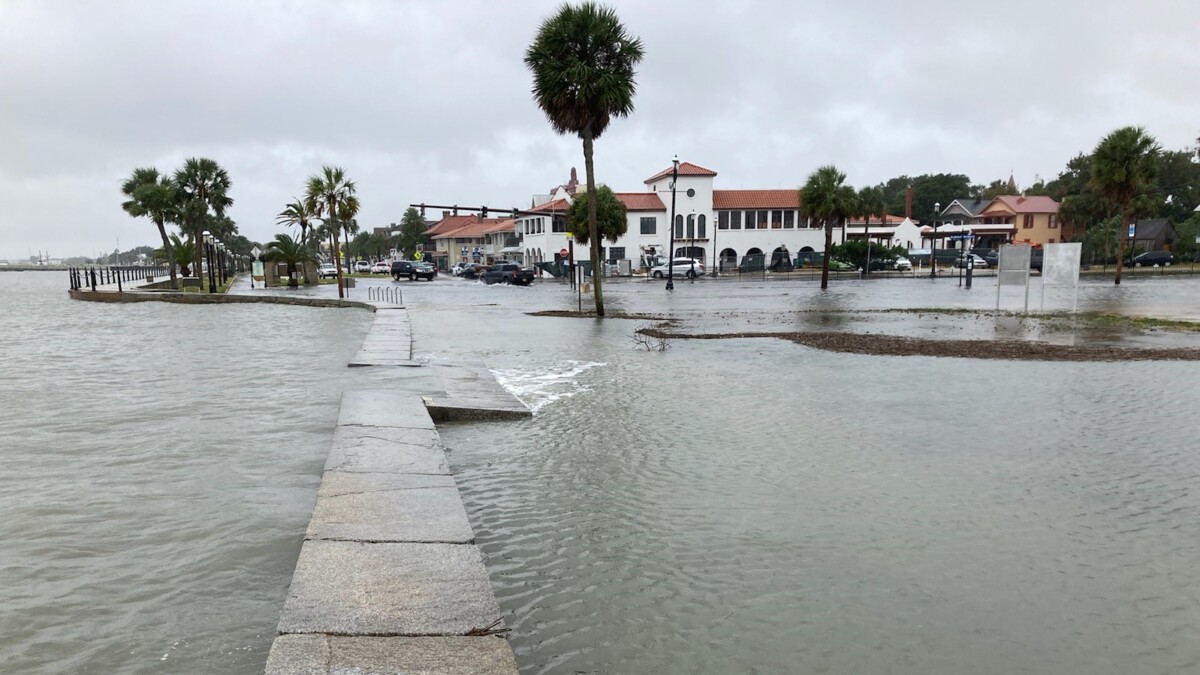While she was being rehabilitated at the Jacksonville Zoo and Gardens for nearly two years, Asha won everyone’s heart.
She was endearingly friendly with other Florida manatees. She had a noticeably spunky personality. One veterinarian at the zoo joked that she didn’t want to let Asha go back into the wild, that she just wanted to keep her around.
Then, last month, tragedy: The Florida Fish & Wildlife Conservation Commission found the manatee’s body in the St. Johns River on Jan. 12 after she died of cold stress. She could have been rescued if it weren’t for the fact that someone, for unknown reasons, had removed her GPS tracking device. If the device had still been on her body, the Manatee Rescue & Rehabilitation Partnership, of which the Jacksonville Zoo is a member, would have known she was in distress — far from warm waters as temperatures plummeted — and would have intervened.
“Just the fact that, all this work, putting the satellite tag on her and then someone actually removing it, it’s a little more painful,” said Craig Miller, curator of manatee conservation at the Jacksonville Zoo. “The frustration, on top of just being sad about it, but that someone cut her tag off. It’s just, I’m still trying to wrap my head around it.”
Adversity that Asha suffered prior to her rescue was part of a large-scale unusual mortality event that has been affecting manatees on Florida’s Atlantic coast since 2020. Poor water conditions in the Indian River Lagoon caused algal blooms and widespread loss of seagrass, which led thousands of manatees to starve. Along with this, the negative effects of human interactions remain among the most serious threats to manatees.
So far this year, state wildlife officials have recorded 83 deaths across the state through Feb. 9. That figure roughly tracks the number of deaths from the same period last year but is significantly better than 2021 or 2022, when more than 200 manatees died during the same period of about five weeks. Overall, Florida averages more than 700 deaths per year.
In Jacksonville, Miller spread word among his colleagues when he heard about the death of the manatee, beloved among Florida residents as one of the state’s iconic, gentle mammals. Asha was believed to be about 4 years old. Manatees in the wild can live to 50 or 60 years.
“It was rough, when we lost her. It was rough,” Miller said. “It took me about 45 minutes, honestly, to text them and let them know the news, because I knew everyone was going to be upset.”
Asha had been rescued in March 2021 from the Halifax River, in Volusia County, where she was found underweight, alone and suffering from cold stress. She was in critical condition when she arrived at the Jacksonville Zoo but beat the odds to make a successful recovery. In almost two years of rehabilitation at the zoo’s Manatee Critical Care Center, she gained over 600 pounds and grew to a length of 8 feet, 2 inches. They released her back into the wild in February 2023.
The tracker they had put on Asha was in a buoy, slightly smaller than a football, that was attached by a 6-foot tether to a belt around the base of her tail. Miller said that the trackers are designed to pose no harm or inconvenience to the animals. He said that, barring the unlikely possibility that the person had a specific device with a bladed hook for disentangling marine mammals, his best guess is that whoever removed the device was in the water with Asha and used a knife to cut the belt. The tracker was found floating by itself.
“I think somebody probably just thought they knew better, and maybe they thought they were helping the animal. But in hindsight, that definitely didn’t help the animal,” he said. “It should have been very clear that it was purposely put on there.”
Growing to more than 11 feet and weighing as much as 1,300 pounds, manatees in Florida are favorites among tourists and residents, especially when they congregate in warm-water springs or near power plant discharges in large numbers in the winter. This year, Blue Springs State Park north of Orlando said it counted a record 932 manatees huddled together. At Apollo Beach near Tampa, more than 1,100 manatees were sighted last month near Tampa Electrics’ Big Bend Power Station.

In October, the U.S. Fish & Wildlife Service said it would begin a 12-month evaluation to determine whether to reclassify manatees from threatened to endangered. Biologists and conservationists had sought the change, which would reverse the agency’s decision in 2017 to move manatees off the endangered list.
The worst threats to manatees are habitat degradation, loss of food sources, loss or lack of access to warm-water sites during the winter, entanglements and watercraft collisions, said Lisa Thompson, a spokeswoman for the state wildlife agency. Boat strikes are the largest cause of human-related manatee deaths in Florida.
Tiare Fridrich, a manatee biologist at the Save the Manatee Club, said that educating people on ways to be conscious of the animals’ safety is a crucial part of conservation efforts.
“There’s been a lot more ecotourism companies pop up just in the last couple of years, and so trying to jump on it before it becomes like everybody’s potentially harassing manatees,” she said. “If we can educate before we get there, that would be great, and kind of set the standard so that that’s what everybody’s doing. It’s a social change.”
Fridrich said that people are generally willing to learn about sustainability and change their activities accordingly.
“More and more people are coming to Florida and they want to do things sustainably. And they’re saying, ‘I don’t want to go out with a group that goes out and pets manatees, right? I want to watch them in the wild doing their thing,’” she said. “‘Who can I go with that actually cares about the health of these animals out there?’ So, it has been really successful, and we’re continuing to train more and more groups that express interest.”
Miller, the manatee curator in Jacksonville, said some of the same actions that will help manatees will make Florida better, too.
“We’re helping ourselves,” he said. “Because the things you do to help manatees, cleaning up the waterways, taking care of your fishing line, disposing of it properly, keeping the garbage out of the waterways,” he said. “The more we can do to take care of the environment, especially the waterways, it’s helping all different species.”
Miller said he was optimistic for Florida’s manatees, but added, “It’s been a rough couple of years.”
Lead image: A manatee comes to the surface for a breath at Three Sister Springs in Crystal River. | Lauren Whiddon, Fresh Take Florida
This story was produced by Fresh Take Florida, a news service of the University of Florida College of Journalism and Communications. The reporter can be reached at bcrosbie@ufl.edu. You can donate to support the students here.






